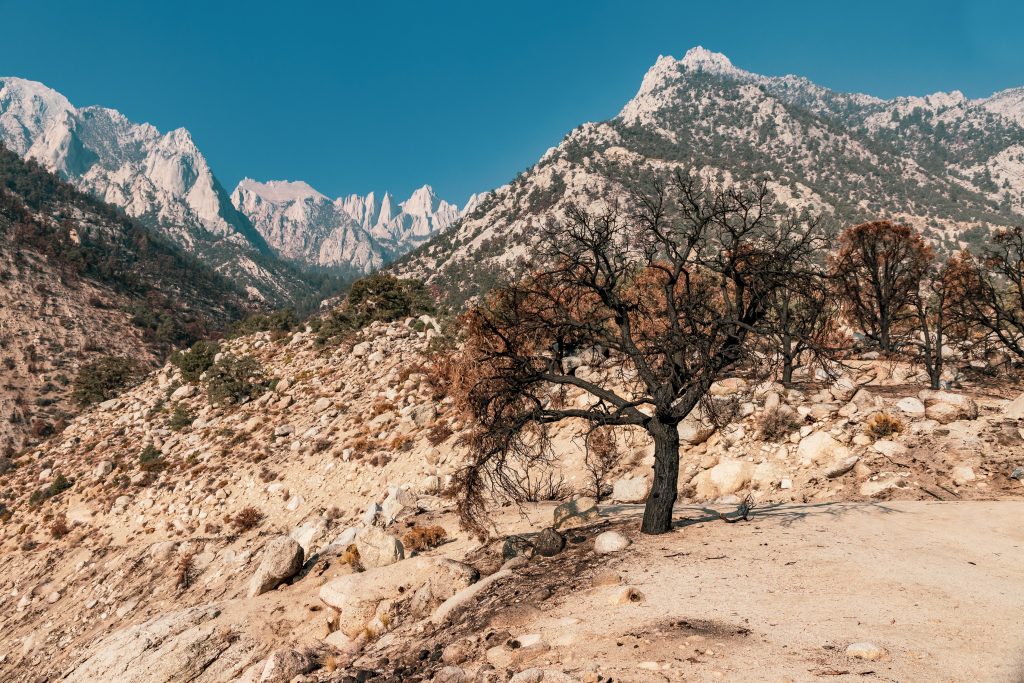How Can the West Coast Prepare for Worsening Droughts
By: Jane Marsh
If you’re an avid outdoor adventurer, you might have tried to reassure yourself that the severe storms pummeling the PCT and other western locations would ease the drought conditions the region has faced in recent years. Unfortunately, even this unusual wet season may not be enough.
The drought that began over two decades ago shows no signs of lessening. The region may plunge into a perpetual dry season, and human actions play the leading role. Now, residents may find themselves low on one of life’s most vital resources, and some are already feeling the pain. How can the West Coast prepare for worsening droughts without disrupting people’s standard of living?
The Extent of the Western Drought
To say the western drought is severe is an understatement. Researchers analyzed data spanning the past 1,200 years. The past 22 years have been drier on average than any other megadrought, with 2002 and 2021 being the driest times ever. About 96% of the west is unusually dry and 88% remains in drought, with California the hardest hit.
These dry conditions may seem local but have a nationwide ripple effect. For example, many of the nation’s ranches lie in drought-stricken areas, and low water levels contribute to poor crop yields and higher sticker prices at the grocery store.
4 Factors Affecting Water in the West
Why is the west so dry? Four factors predominate.
1. Climate Change
Climate change is the most important factor driving worsening droughts in the west. Scientists estimate that 42% of the drought’s severity is attributable to higher temperatures, thanks to the accumulation of greenhouse gases in the atmosphere. 2021 alone saw summertime temperatures over 4 degrees hotter than the 1971 to 2000 average.
Unfortunately, the thermostat may continue rising. Despite the pandemic, the world is still not on track to meet its climate change targets to keep rising temperatures below 2 C. Humanity will nearly certainly pass the 1.5 C threshold within a decade. The problem continues as wealthy nations fail to curb emissions fast enough and don’t meet carbon-removal goals to stabilize temperatures.
2. Population Shift
The population continues to grow in the West as more people immigrate to the region, lured by the weather. Texas lay furthest to the east of the eight fastest-growing states — the rest are on the West Coast. More people strain already scarce water resources.
3. Agriculture
Agriculture draws the most water for consumptive use, making up 90% of the supply in some western states. Approximately 80%-90% of the water from the Colorado River goes to farming. As a result, some farmers have begun shifting their focus, selling livestock herds like beef cattle and crops like alfalfa that require intensive water use. The price of hamburgers may continue rising for years, thanks to dry western conditions.
4. Recreation
There’s a golf course in nearly every western town, sometimes more than one — and they use tremendous amounts of water. These facilities often fall into the “functional turf” category, granting them special exceptions for use during restriction periods. However, given the ongoing drought, some California courses have had no choice but to amend their practices.
What Individuals Can Do
What can you, as an individual consumer, do to help the West Coast prepare for worsening droughts? How can you reduce your consumption, especially if you live in the region? Here are five tips.
1. Install Low-Flow Fixtures
Is it time to upgrade your bathroom? In some states, like California, you must select low-flow replacements — with good reason. For example, dual-flush toilets save as much as 70% more water than traditional models by separating solids and liquids.
Low-flow showerheads save up to 1,460 gallons of water and similar faucets 700 gallons. These upgrades involve upfront costs but are a long-lasting way to make a difference.
2. Use Containers
How often do you mindlessly turn on the sink and let the water run while you wash dishes or produce? Doing so sends unnecessary gallons down the drain. Instead, use a bin to scrub your carrots and radishes and run the dishwasher. Although it may sound counterintuitive, an energy-efficient machine uses only 4-6 gallons per cycle, whereas handwashing can gobble up to 22.
3. Set a Timer
Does your shower double as a therapy chamber? It’s understandable to want to lock yourself inside after a long day and let the water cascade around you like a comforting wet blanket. However, you’re better off pouring a bath if it’s a lengthy soak you crave, as showering for over five minutes can send untold gallons down the drain. Use a timer to help you adjust to shorter periods if you’re accustomed to spending forever under the jets.
4. Xeriscape
Xeriscaping uses native vegetation and rocks to beautify your lawn instead of water-grubbing grass. This landscape style also is a homeowner’s dream. Who wants to spend every Saturday pushing a mower, anyway? If you haven’t converted yet, make this season the one.
5. Inspect Your Plumbing
Leaks can spur mold, which can damage your health and lead to unpleasant symptoms. They also result in higher utility bills. Why make yourself sick and spend more when fixing pesky plumbing problems will help protect your family and the drought-stricken West?
Preparing the West for Worsening Droughts
The west fell into drought in 2000, and conditions have remained dry since. Even an unusually stormy winter hasn’t been sufficient to undo the damage.
Those who live and work in the region must brace themselves. Preparing the West for worsening droughts requires a dedicated conservation effort from consumers, industry and the government.
Jane Marsh
Editor-in-Chief at Environment.com
Email jane@environment.co
Website https://environment.co/




